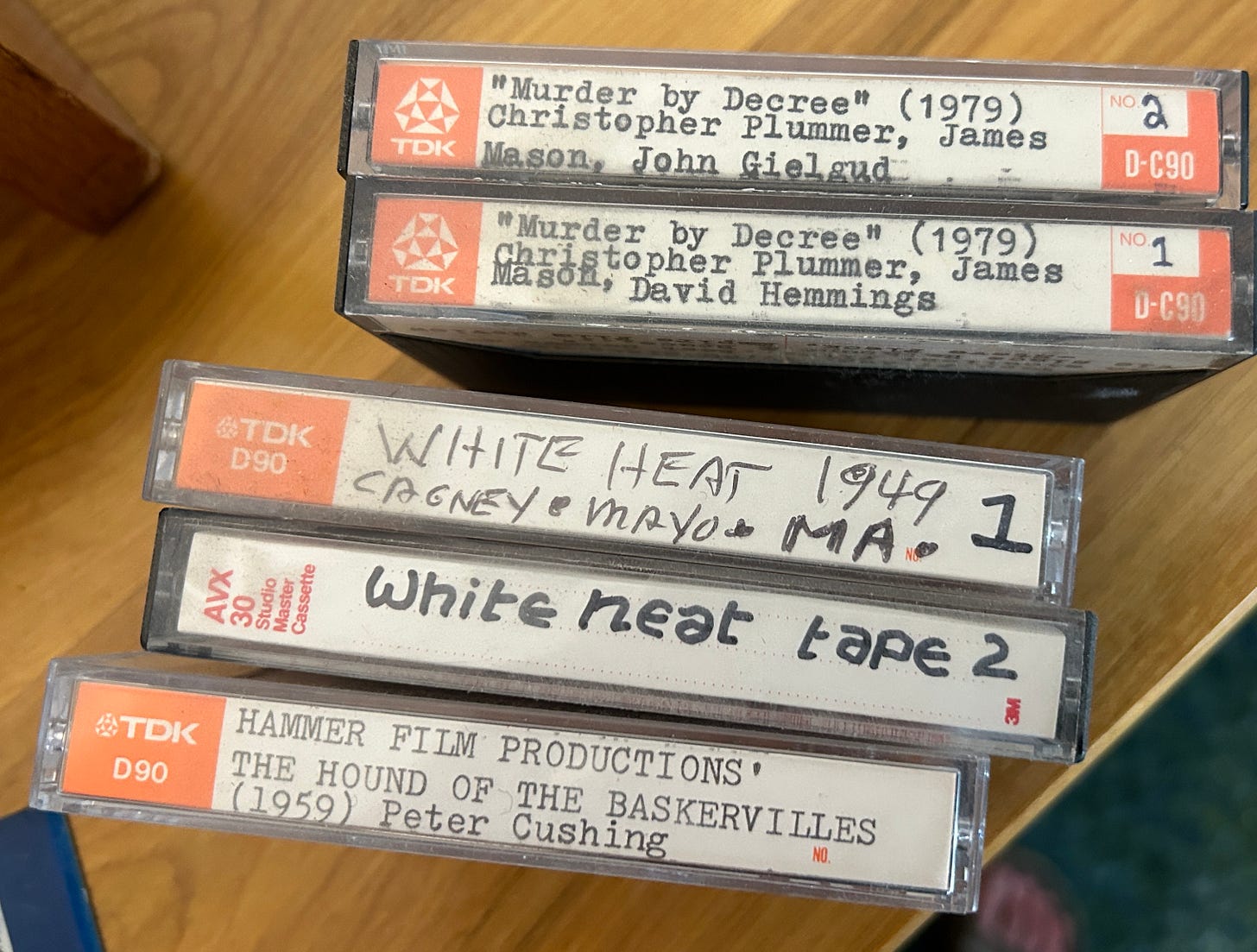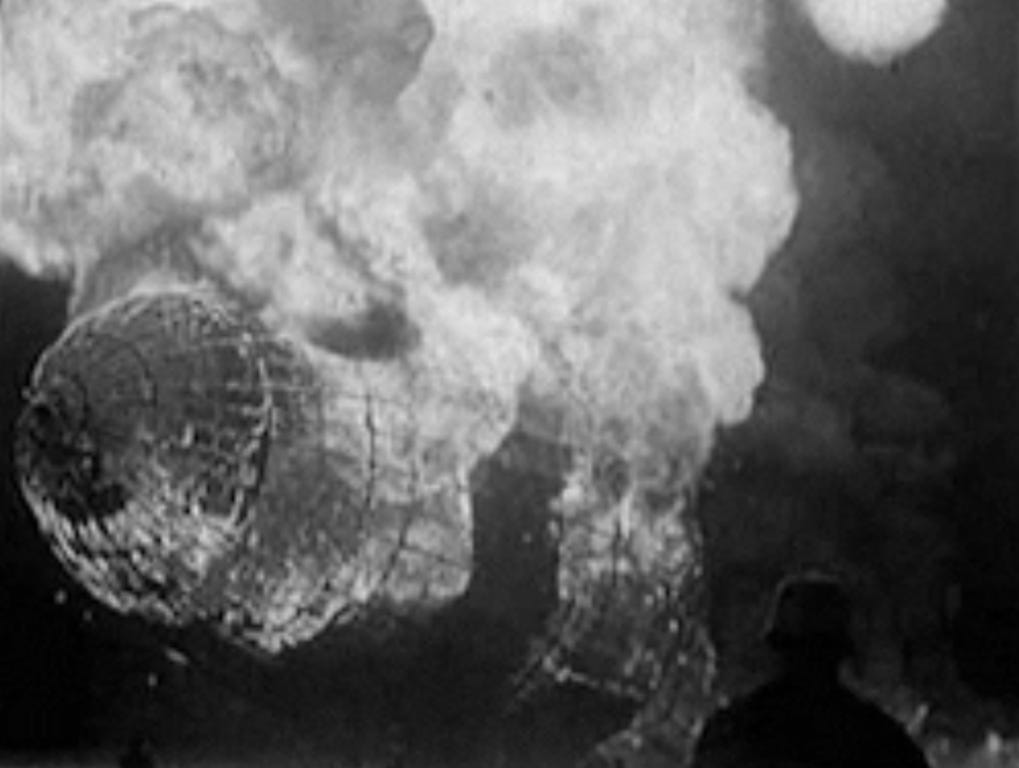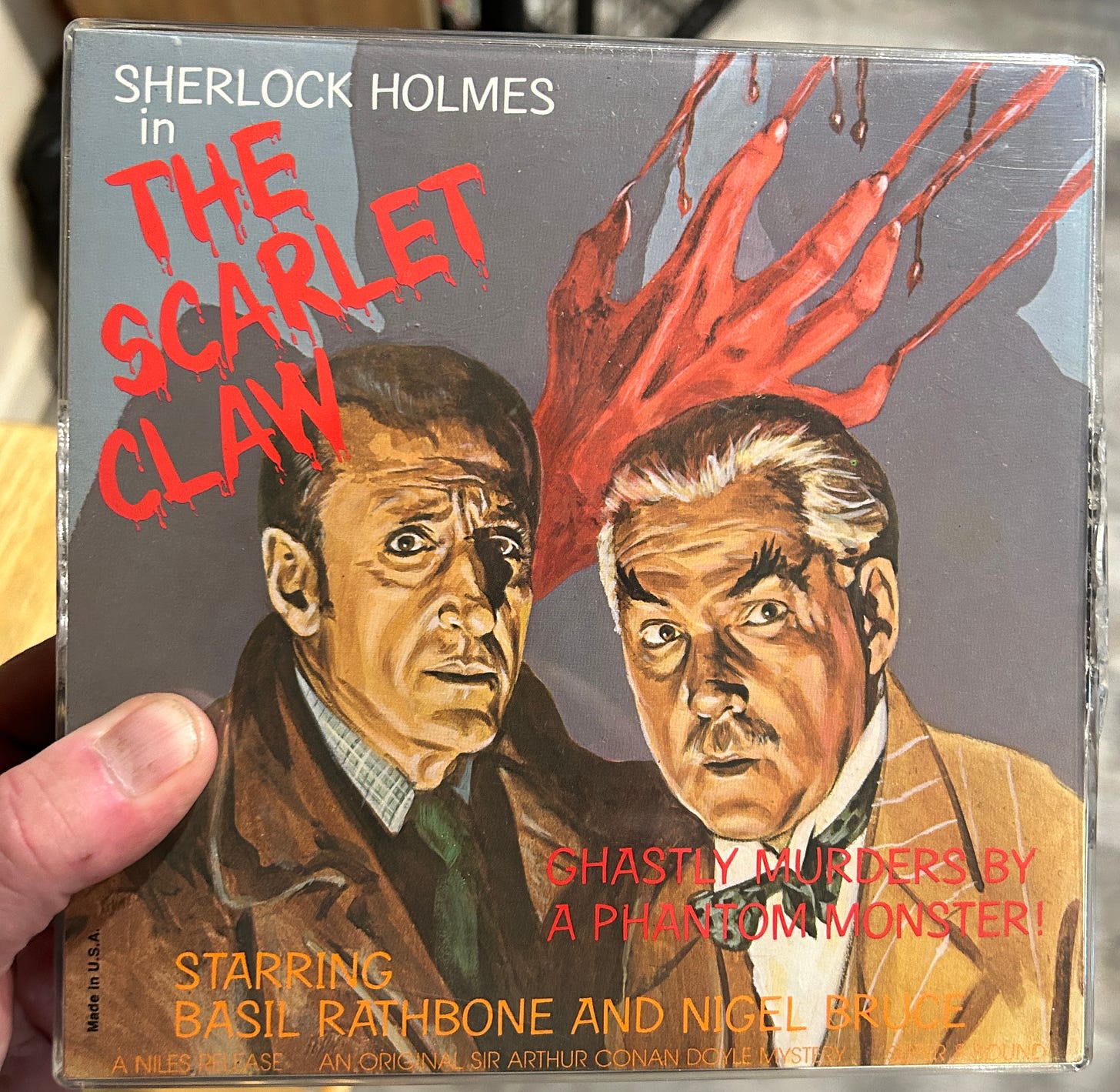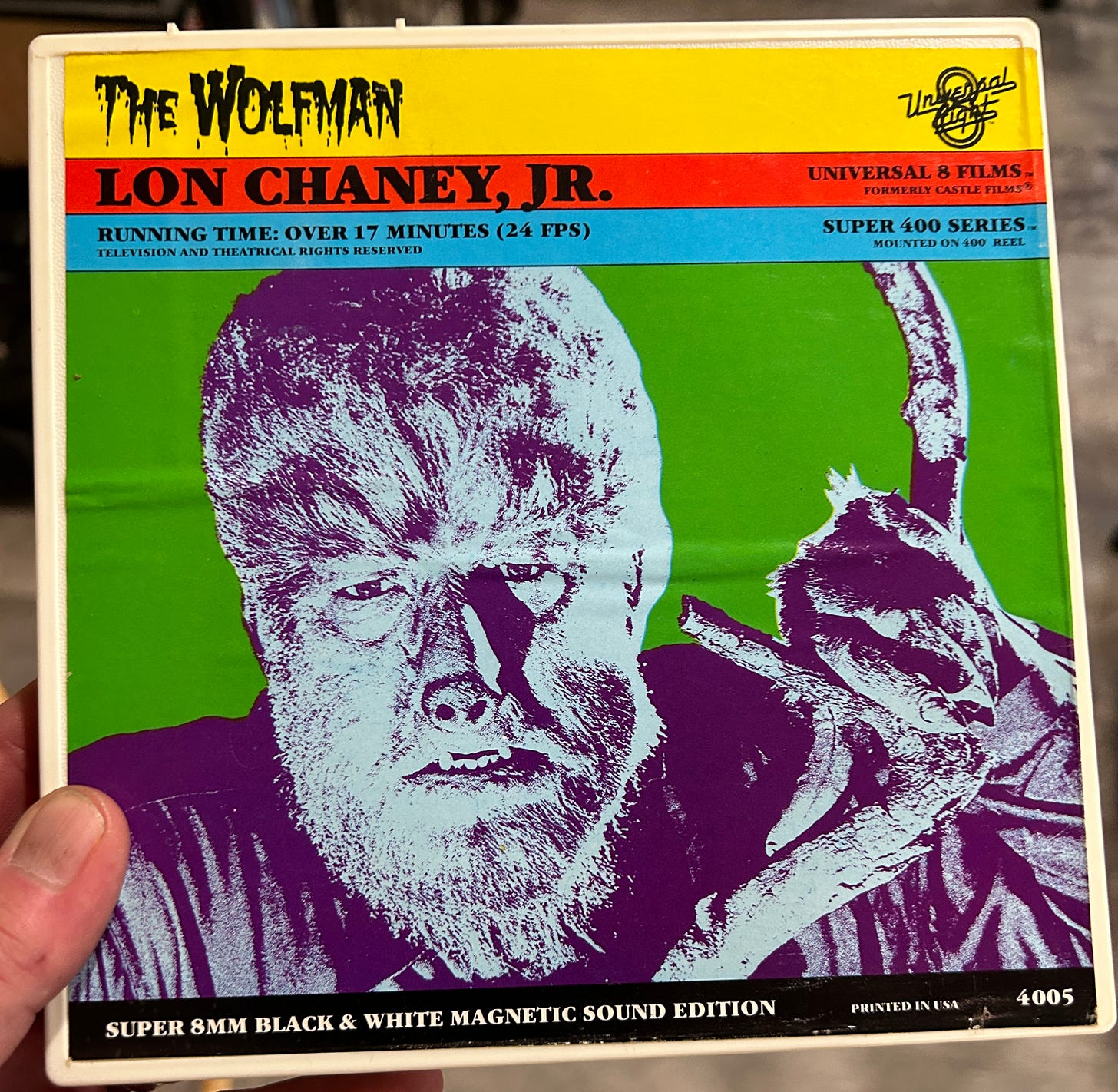CLASSIC HORROR BEHIND THE SCENES: MONSTER KIDS AND CASTLE FILMS
In the age before streaming—indeed, in the age before home video—we Monster Kids had limited access to our favorite vintage horror films…which is why Castle Films were so important.
By Bill Fleck, author of the Rondo-nominated book CHANEY’S BABY, available here.
Did you know? Two-time Rondo-Award winning filmmaker Thomas Hamilton is in the process of making VINCENT PRICE & THE ART OF LIVING. (I’m lucky enough to be a producer on the project.) Check out Tom’s latest HORROR ICONS update—featuring interview clips with Jessica Rains, Elizabeth Shepherd, and Yours Truly—by clicking here. For information about possibly joining the Ignition Group and helping to get HORROR ICONS produced, click here. Thanks!
Check out other articles on this Rondo-nominated blog by clicking here.
Let’s face it; Monster Kids need therapy.
No, not because we like monsters. We need therapy for the suffering we endured because we like monsters!
And, no, I’m not talking about being labelled a “geek” by schoolmates because a giant Wolf Man poster adorned my wall. (I actually got more heat for playing the trombone than for having Hairy Larry be the first thing I saw upon waking up.)
No, we need therapy because of the struggles we faced to simply view the Classic Horror films that defied our imaginations.
Our agonies wouldn’t play out today. For example, if some girl named Cindy in third grade tells her friend Junior that he needs to see the first KING KONG (1933) in order to understand all of these more recent blockbusters, Junior—likely crushing on Cindy to begin with—is nary a click or two away from catching the flick and having a decent excuse to talk with her again tomorrow.
Now, flash that scenario back to, say, 1976.
Unless Junior is lucky enough to live in the NY-NJ area within the reach of WWOR—and the next day happens to be Thanksgiving—he’s not seeing KONG until the fates decree that it shall be broadcast again.
And who knows when that might be? Weeks? Months? Years?
Oh, the humanity…
C’mon, Monster Kids. Let’s dive back into the days when we scoured TV GUIDE every week, panning for a grain of gold…even if it only turned out to be THE MUMMY’S TOMB (1942)…at 2 AM on a Wednesday morning, with school only a few hours away. [1]
And how about when we learned how to tape record nearly clean audio by pushing the condenser mic of our Channel Master cassette machine right up next to the TV’s speaker? How those audiotapes would sustain us as they accumulated over the years…with the commercials edited out, of course, once we learned how to correctly use the pause button. [2]
[Above: C’mon…I’m not the only Monster Kid who audio-taped classic films when they randomly appeared on TV, right? Above are Fleck Family cassette recordings of MURDER BY DECREE, WHITE HEAT, and Hammer’s 1959 THE HOUND OF THE BASKERVILLES.]
But, for me, the biggest salvation of all was the existence of Castle Films.
I was 13 in 1976, and had only recently caught THE WOLF MAN (1941) on, yes, WWOR. Well, having been a Lawrence Talbot fan since seeing ABBOTT AND COSTELLO MEET FRANKENSTEIN (1948) four years earlier (WPIX, 11:30 AM), I had been thrilled to finally catch the original, commercials and all (“You gotta see Seaman’s first.”).
But I was bummed that it was likely to be maybe another four years before the film would see the light of the Boob Tube again.
And then, I came across a Castle Films display at Caldor in Kingston, NY. Most of the films on display were fifty-footers…cartoons, newsreels, maybe a cut-down W.C. Fields flick or two.
And there was a free catalog…
…which included THE WOLFMAN (sic), subtitled “Tale of the Werewolf.”
I was, well, over the (Autumn) moon! As described, this 200-foot reel contained nearly 12 minutes from the actual movie—roughly 17 percent of the release version! [3]
[Above: An advertisement for Castle Films. We Monster Kids loved to collect these digest versions of Classic Horror films…even if my first ones were silent, with occasionally inaccurate subtitling. (“Let’s check the traps” in THE WOLFMAN (sic) anyone?]
Upon presenting my parents with this wondrous discovery, I was informed that THE WOLFMAN could be purchased with the money I earned pulling the neighbor’s weeds, supplemented by additional funds earned doing the chores at home that they hated to do themselves. (My brother was similarly bribed with the promise of obtaining a Castle Films copy of 1931’s DRACULA.)
As time went on, we racked up quite the collection of 200-foot reelers. HOUSE OF FRANKENSTEIN. ABBOTT AND COSTELLO MEET FRANKENSTEIN. THE WOLFMAN’S CURE (from HOUSE OF DRACULA). DOOM OF DRACULA (from HOUSE OF FRANKENSTEIN). Various Abbott and Costello titles.
You get the idea. How many nights my poor father was forced to “run movies”…which he often did in our basement photography darkroom.
By 1978, my brother and I had decided to go all-in and get a Bell and Howell Super-8 sound projector, along with a magnetic sound movie camera. Interestingly, Castle Films had by then become Universal 8, and began releasing 400-foot digest versions of the classics…averaging 18 minutes in length! [4]
Those accumulated, too. By then, I was working at a local pharmacy—dusting shelves, mostly, and hauling in around $40 per week (about $190 in today’s dollars)—so the dough that didn’t go into producing my own Super 8 productions went toward purchasing another Universal 8 digest classic.
I was reminded of all this just the other day. My dad has been gone since 2019, and my mom has just moved out of state to a nice retirement community a few blocks from my brother. That leaves me to clean out their house, where they’d lived for sixty years.
I have at my house already some of those Universal 8 films, including the two-parter—800 feet!—that they’d released from JAWS, and the complete KING KONG released by Nostalgia Merchant.
But imagine my surprise when I cleaned out an obscure closet at my parents’ home and found not only our remaining Castle Films/Universal 8 collection, but the Niles Cinema complete Super 8 releases of SHERLOCK HOLMES AND THE SECRET WEAPON, THE SCARLET CLAW, and THE HOUSE OF FEAR as well.
[Above: My first Castle Film, a silent version of THE WOLF MAN (yeah, they got the title wrong), which ran for 12 minutes when projected at the incorrect speed of 18 frames per second.]
This discovery spurred me into finding out more about Castle Films, and I think Monster Kids in my age bracket might really enjoy the story…
To begin with, the “Castle” in Castle Films was Eugene Winston—you guessed it—Castle.
Born in San Francisco to Albert E. and Virginia (Winston) Castle on April 9, 1897, Eugene started as a reporter in 1915. He was particularly noted as a newsreel cameraman for Gaumont Mutual Weekly, and later, Pathé News, a U.S. offshoot of the famous British documentary production company. [5] By 1918, Castle became a distributor, and—according to writer Paul Zamarelli—was “the first to specialize in educational and industrial films.” [6]
The death of his brother Albert, Jr.—aged only 17—on July 8, 1920 obviously rocked the Castle family. But Eugene’s career continued to expand and prosper. By 1922, he had become the first editor of Fox News’ Pacific Coast bureau. In 1924, he founded Castle Films, which paid the bills by making business and advertising flicks.
And then, events came together in the late 1920s that laid the groundwork for the company to take a serious turn…a turn for which Castle is now famous.
[Above: Eugene Winston Castle—looking a bit like Lon Chaney, Sr. offscreen?—the brains behind Castle Films. Though United World Films had bought him out by the time the Classic Horror film digests were released, his pioneering home movie market made it all possible.]
“[T]he United States saw rapid economic growth and prosperity,” Zamarelli explains. “As the country became the wealthiest in the world, middle-class Americans began indulging in products once considered luxury for the wealthy—cars, radios, and of course, the portable projector.”
A September 1927 strike of theater operators in Chicago resulted in an uptick of home projectors. The folks at Pathé took notice.
“Catching wind of the increased use of home projectors,” Zamarelli notes, “Pathé finally put a campaign into full gear to revive their portable projector, the Pathéscope, in the U.S.”
Inspired, the company released a series of short 16 mm films they called Pathegrams.
“These early films are mostly educational with a few Hal Roach comedies,” Zamarelli explains.
What the films weren’t was cheap. A 400-footer priced out at $35…roughly $625 in today’s dollars at this writing. Rentals were more popular as a result. But sadly, the onset of the Great Depression killed off the division.
The early 1930s were no bargain for Eugene Castle, either. On May 23, 1931, he lost Albert, Sr.—his father—at the age of 69. Albert was interred near to his late son, Albert, Jr., in Holy Cross Catholic Cemetery.
But by 1937, the economy was improved enough to revive the home projector market. Sensing opportunity, Castle joined forces with Pathé and brought back the Pathegrams.
“Castle then compiled, edited and distributed three films himself with little input from Pathé,” Zamarelli recounts. “The first, HINDENBURG EXPLODES, is a tremendous success taking in a reported $40,000-$50,000 in the first few days…”
That’s $864,000 to a bit more than $1 million in today’s dollars.
[Above: Castle’s HINDENBURG EXPLODES! made nearly $50,000 in the first few days it was released to the home movie market, convincing Castle to split with Pathé and go out on his own.]
His next two films—THE CORONATION OF THEIR MAJESTIES GEORGE VI AND QUEEN ELIZABETH, followed by THE LIFE OF EDWARD, BRITAIN’S EX-KING—made bank as well.
His dizzying early success convinced Castle that he didn’t need Pathé, so he severed all ties with them in July of 1937. By the end of the year, he had 12 films on the market—silent flicks, sports reels, and his very popular newsreels. His one-reel recaps of the top headlines of any given year—called NEWS PARADE—were his bread and butter. He soon added specialty reels, THE SPORTS PARADE, THE WORLD PARADE, and THE ADVENTURE PARADE among them.
Sadly, Virginia Castle—Eugene’s mom—passed on September 16, 1940, aged 71. This left Eugene as the last of his nuclear family to remain alive.
And then, of course, the Japanese attacked Pearl Harbor on December 7, 1941, bringing the U.S. into World War II.
Castle, 44, had already made a deal with the U.S. Government to distribute more than 12,000 educational films. But when wartime footage—particularly from Europe—packed the movie theaters, Castle released at least 37 home movies featuring combat, increasing his market share. In fact, in 1943, Castle told THE NEW YORK TIMES that his films had reached more than 20 million people.
Universal Studios became involved with Castle in January of 1947 when United World Films—a division of Universal—bought a controlling interest. Castle was then able to release digest versions of Abbott and Costello films, as well as those of W.C. Fields and the Woody Woodpecker cartoons.
[Above: Castle Films released two digests drawn from HOUSE OF FRANKENSTEIN (1944): DOOM OF DRACULA, and, well, HOUSE OF FRANKENSTEIN. I can’t be the only Monster Kid who cut the two together and mounted them on a 400-foot reel…]
By the early 1950s, United World Films had bought out Eugene Castle completely, to the alleged sum of $3 million—a bit more than $35 million now. Castle went on to become an investment counsellor, and then a critic of the United States government.
Castle was specifically angered by what he saw as wasteful foreign aid. He often appeared before Congressional committees, extolling the virtues of curbing spending and eliminating the U.S. Information Agency. At one point, he asserted that President Dwight Eisenhower’s proposed $4 million foreign aid program should be cut in half. Castle believed continued spending would bankrupt the U.S., and wrote several books in support of his thesis, including THE GREAT GIVEAWAY, BILLION, BLUNDERS AND BALONEY, and IT’S YOUR MONEY.
Eugene Castle died on February 9, 1960, at Doctors Hospital in New York City. He had been admitted a week earlier, and died of surgery complications while combatting an unnamed “long illness.” Of course, he was interred at Holy Cross Catholic Cemetery, near his mom, dad, and baby brother.
Interestingly, for Monster Kids, the treasured legacy of Castle Films truly began after United World Films bought Castle himself out. For it was supposedly in 1957—perhaps to tie in with TV’s Shock Theater releases?—that Castle Films began to distribute their “most popular series” [7] of home movies, the Classic Horror flicks that included DRACULA, FRANKENSTEIN, THE WOLF MAN, and THE MUMMY.
Of course, Castle Films didn’t exist in a vacuum. Other studios—including Warner Brothers and Columbia—entered the home-movie digest market, as did United Artists and 20th Century Fox (remember Ken Films?)
And certain boutique companies—such as the aforementioned Niles Cinema and The Nostalgia Merchant—offered a limited collection of full-length home movie versions of mystery and horror classics.
[Boutique companies released full-length features on Super-8 film. Above is my brother Steve’s prized copy of THE SCARLET CLAW (1944). The complete film was mounted on four 400-foot reels by Niles Films.]
But, somehow, Castle just seemed to stand head-and-shoulders above the rest. I’m sure the catalog had much to do with that.
Castle Films became Universal 8 in 1977. As noted above, the digests were expanded, though the cover art became gaudier. Still, it was very cool for us Monster Kids to unspool these films on our home silver screen, crisp, bright, and full of sound and fury.
[Above: Universal 8’s 17-minute-plus version of THE WOLF MAN. Sure, they didn’t get the title right again…and yeah, the picture on the cover is actually from FRANKENSTEIN MEETS THE WOLF MAN (1943). But it was a prized part of my film collection nonetheless.]
Of course, video would soon take over…it was also 1977 when Alan Blay brokered a deal to release 50 films from 20th Century Fox on video. My first video purchase was in the early 1980s—a Betamax version of KING KONG (1976), which cost me a whopping $69.99…nearly $225 today. And it went from there.
So now, Monster Kids, yeah…“Your suffering is over. Now you will find streaming.” And I, for one, am very grateful.
But I still cherish those days in Dad’s darkroom while the Castle Films unrolled in all of their black-and-white magic.
NOTES
[1] A very real torture for my brother and me was convincing our mother to let us set an alarm to go downstairs and watch the film (with the volume down low). The days prior to the precious viewing were filled with threats like, “If you don’t pass that math quiz, you’re not watching THE MUMMY’S TOMB!” (My father, being a Monster Kid himself, was more indulgent…at least, in this regard.) Ironically, my mother—who at 88, still has no love for these films—shared a FAMOUS MONSTERS OF FILMLAND dedication (#157) with us, her Monster Kid sons. (But that story is for another day.)
[2] Perhaps our greatest triumph was due to having taped the audio for HOUSE OF WAX (1953). Upon discovering a subsequent airing, my brother Steve listened carefully to the tape, and marked out snippets that amounted to roughly 18 minutes. His plan? To shoot these scenes in Super-8 directly off the TV on Ektachrome sound film, creating his own “digest” version. (A legit commercial digest version of the film did not exist.)
[3] That was when projected at 18 frames per second—standard speed for silent films—which gave the clips a somehow fitting dreamlike quality. The sound version, which was projected at 24 FPS, clocked in at roughly 9 minutes.
[4] In anticipation of receiving the projector, I had ordered the new Universal 8 version of THE WOLF MAN. The night the projector arrived—via UPS—we set it up with a screen in the living room, a rare occurrence. We were all blown away by the picture and sound clarity, when disaster hit. While Larry Talbot limped through the woods, he was hailed by hunters. “Hello there!” they yelled. “Stop! Come here! Youuuuuuuuuu….” And the screen went black. A defective projector. Oh, how those next few weeks passed in untold agony until the new one arrived…
[5] RKO acquired the company in 1931.
[6] Zammarelli also credits Castle as “the founder of the home video industry,” a case he makes very well.
[7] Or, so says Wikipedia…so who knows? But it would be nice if true.
SOURCES
“Castle, Eugene Winston.” www.findagrave.com. Accessed September 2, 2024. Web.
“Castle Films.” BLACK MOON PRINT. www.blackmoonprint.com. Accessed September 4, 2024. Web.
“E.W. Castle, Writer, is Dead at 62.” HARTFORD COURANT. February 10, 1960, p. 26. Print.
“Film Maker Castle Dies.” THE VIRGINIAN-PILOT. February 10, 1960, p. 10. Print.
“Filmland Pioneer Castle Dies in N.Y.” INDEPENDENT. February 10, 1960, p. 21. Print.
“Home Movie Man Dies.” THE COMMERCIAL APPEAL. February 10, 1960, p. 29. Print.
Zamarelli, Paul. “Eugene Castle: The True Father of Home Video.” VHS COLLECTOR. www.vhscollector.com. Web.
Note: The photos contained herein are used for educational purposes only. I own some of the copyrights, but not all…and I don’t make any money from the website anyway.












I am enjoying your personal stories along with the historical pieces. I was never a fan of horror films, too scary. Also, I spent my first 18 years in Brooklyn, CT. It was a rather sheltered, conservative upbringing, more musicals etc.
Keep writing and sending out emails. I'm learning a lot. Thank you.
What a great dive into the past. Thank you.
I never handled any of these shorts. I think my local public library did, showing a bunch of reel to reels to us kids in the 1970s.
PS: I did, in fact, record audio of several beloved movies off of the family tv. Years later I found one and played it back. It was 2001: A Space Odyssey and the audio quality was horrendous... but an hour in a terrible SCREAM brayed over the tape. What the heck? Turned out my brother had started making noises to irritate me, and I thwacked him. Ah, memories and monsters.